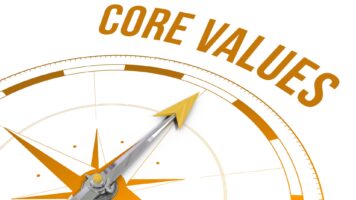Leadership Style: Blinders, Beacon or Both?

Personal Development
November 10, 2011
Jane Perdue
Executive Director, The Jane Group
Topics
Daniel Goleman, emotional intelligence, humility, Innovation, Level 5 leader, Margaret Wheatley, self-awareness, Warren BennisI was on my way to a meeting, driving on the freeway in blinding rain and happily singing along with the radio. Suddenly, there’s a semi-trailer on either side of my car, both churning up road mist and throwing off their own back-splash of rain. I couldn’t see a thing. No more singing as I’m fiercely clutching the steering wheel, intent on maneuvering my car past the trucks. I’m focused on reaching clear road where my line of sight would be better.
Those trucks were like leaders who use their power and position to blind others, in essence saying we’re doing it my way, so look where I point and march smartly in that direction. Margaret Wheatley observes that “ever since uncertainty became our insistent 21st century companion, leadership has taken a great leap backwards to the familiar territory of command and control. Some of this was to be expected, because humans usually default to the known when confronted with the unknown. Some of it was a surprise, because so many organizations had focused on innovation, quality, learning organizations, and human motivation. How did they fail to learn that whenever you impose control on people and situations, you only succeed in turning people into non-creative, shut-down and cynical workers?”
I think it’s easier to wear the leadership command and control blinders than to be a leadership beacon. The former is simply an enforcer of what has gone before while the latter is real work. You've got to want it real bad.
Blinders or beacon – which one are you?
- When there’s a problem in the office, do you create a new policy to handle it? Or, do you work with others to figure out the root cause and fix that?
- Can you quote yesterday’s sales figures, production numbers and the cost per sale like nobody’s business? Do you monitor morale, trust and consider employee metrics like satisfaction part of your key performance indicators?
- Does your firm want employees to provide feedback yet shoot the messenger?
- Is the messiness of innovation embraced, recognizing that failures do happen? Or, is innovation part of your mission statement yet failures are counted and are part of performance reviews as a negative?
- Is there a singular focus on efficiency and the bottom line? Or, is there focus on the former but combined with assessing effectiveness and sustainability?
- Does humility or being a super-hero get you on the boss’s radar screen?
- Does your boss ever say “thank you” or is the rate of exchange a fair day’s work for a paycheck?
The gift is knowing when it’s appropriate to use the blinders or be the beacon. Skillful leaders know too much of anything, whether positive or negative*, throws things out of whack and lead to less than optimal results. As Warren Bennis writes, “Good leaders make people feel that they're at the very heart of things, not at the periphery. Everyone feels that he or she makes a difference to the success of the organization. When that happens, people feel centered and that gives their work meaning.”
*I’m still trying to decide if this applies to chocolate or not.





Jane: nothing of the sort applies to chocolate! 🙂
On the other hand, thanks for this reminder. It’s really interesting the unawareness many leaders, this one included, sometimes exhibit about the ways we keep others from participating. It’s an ongoing necessity to make sure that the workplace is open to everyone’s contribution.
[…] Change Group recently posted an article, “Leadership Style: Blinders, Beacon, or Both?” In it, the author asks leaders a number of thought-provoking questions that […]